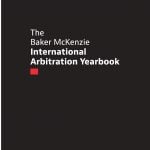In the field of mergers and acquisitions, warranties and indemnities introduced to share purchase agreements (SPAs) offer certain level of security and allocate risk for unsatisfied expectations. As such, they are the main source of claims arising from M&A transactions. In order for the warranties and indemnities to have a real impact they should be secured – but is this enough? To ease the buyer’s concern regarding the seller’s capacity to pay indemnification amounts, arbitration clauses should be drafted in way that decreases the risks associated with the warranty and indemnity claims that will be referred to arbitration in the future. This article briefly explains the security tools used in M&A transactions and what to consider when drafting arbitration clauses that will be used to resolve disputes involving these security tools.
Traditional ways of securing recovery of damages
Buyers can use many different security tools to cover their losses when the promises given under the SPA are not kept, such as the escrow mechanism, installment payment or earn-out. The escrow mechanism can be used to secure shares or an amount of money to compensate certain pre-determined losses. The parties could also agree on a bank guarantee provided by the seller. The installment payment method assigns pre-determined conditions on the installments and avoids the buyer from risking a higher amount of money. Lastly, the earn-out method lowers the purchase price for the buyer, and if the seller’s projected goals are achieved, then an amount of the profit made will be paid to the seller.
Although these security tools are beneficial, they may not guarantee the buyer to cover its losses if the arbitration venue is not chosen wisely. Enforcement of an arbitral award may turn into a painful process. Therefore, the likely place of enforcement of the award, i.e. where the seller has its assets, should be the same as the venue of arbitration because in many jurisdictions the enforcement of an arbitral award is far easier unless the place of arbitration is different from the place of enforcement.
One last thing to consider when choosing the venue is whether the jurisdiction of the venue stays the enforcement process until the end of the set aside lawsuit filed against the arbitral award. If a party does not wish to wait any longer after the issue of the arbitral award, they may agree on a place of arbitration where parties can waive their right to challenge the award before state courts.
While drafting an arbitration clause in an SPA, the possible intervention of state courts is also one of the main discussion points. Most of the arbitration laws based on the UNCITRAL Model Law allow state courts to intervene, or more accurately, to assist arbitral tribunals during arbitration proceedings. This is important when it comes to requesting interim measures directly from state courts or, as the case may be, requesting the state courts’ assistance on an interim measure issued by an arbitral tribunal. The claimant in an arbitration would most likely use the right to resort to state courts for interim measures, especially in cases of damage claims, in order to freeze the assets of the respondent.
Lex arbitri (the venue) will come into play while assessing the state court’s intervention. If lex arbitri allows such intervention, the parties will be granted access to state courts automatically with the choice of venue. In some cases, the parties may also choose not to have access to state courts even if such a route is available under lex arbitri. However, in order to give the comfort to the claimant, who will be the buyer in most cases of warranty and indemnity claims under SPAs, lex arbitri should be chosen to allow the state courts’ intervention.
Warranty and Indemnity Insurance
The new era’s security tool is warranty and indemnity (W&I) insurance, which provides an alternative capital source to de-risk, facilitate and enhance M&A transactions. W&I insurance covers the unknown (title insurance, environmental insurance, end of fund life, etc.) and known (tax, litigation liabilities, etc.) risks simultaneously. Insurers rarely insure known risks since the insurer usually requests the due diligence results of the buyer and often carves the due diligence findings out of its insurance policy scope. It can be done with either sell or buy-side W&I Insurance. In sell-side insurance, the buyer claims against the seller for the breach of W&I and the seller claims against the insurer (except for the seller’s fraud or knowledge). In buy-side insurance, which is 90% of insurances, the buyer directly claims against the insurer and the insurer may only subrogate its claims upon the seller’s fraud or knowledge. Further information regarding W&I insurance is available at: https://www.globalarbitrationnews.com/post-ma-arbitration-warranty-indemnity-insurance-changes-the-scene/.
What to be careful when using the new era’s solution for compensation is to align the dispute resolution forum of the SPA with the forum in the insurance policy. It is important to avoid parallel proceedings and different awards from different jurisdictions and authorities: if not careful, damage recovery process can end in a deadlock for both parties. If the dispute resolution forums are different in the share purchase agreement and the insurance policy, there could be at least two different disputes and the awards may conflict each other.
Conclusion
Warranties and indemnities, and securing them with certain tools, do not assure a flawless path to recovering damages. Careful drafting of arbitration clauses is necessary to lower the risk of not compensating losses.





